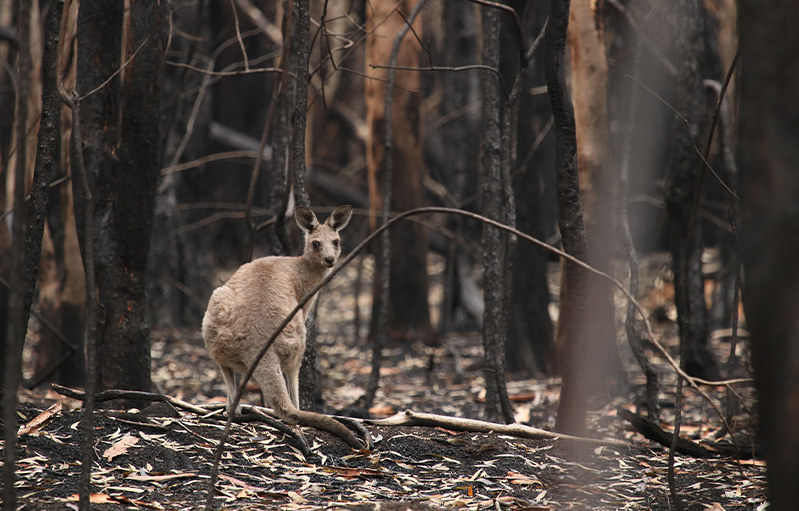Latest News
05 December 2020

It’s no coincidence that Australia’s hottest year on record was also when we endured some of the most extreme weather events ever seen.
Climate change is making itself known. In the last year alone, Australia has experienced some of the most extreme weather events on record. Devastating bushfires, cyclones, floods and severe storms have left their mark on both our landscape and people, with many communities still picking up the pieces in their wake.
2019 broke the record as the hottest and driest year ever. And as our climate continues to warm, extreme weather patterns will become more frequent and intense. We can’t control the weather, but we can prepare for it – and never has it been more important to expect the unexpected.
Expect heavy rains and flash flooding, forecasters say
The Bureau of Meteorology (BOM) has declared we are in a La Niña cycle. Bursts of extreme, short-duration rain is predicted across Australia, even in drier areas. Instance of flash flooding in urban areas will increase.
Flash flooding happens with little warning, so it is difficult to prepare for. It’s also one of the most expensive disasters to recover from, as water finds its way into everything. Comprehensive home building and contents insurance has never been more important as more and more regions of Australia become increasingly prone to floods.
However, if you do find yourself in the unfortunate event of a flood, there are some things you can do. Secure your home as well as you can and move to higher ground. It’s critical that you never try to drive through floodwater, and don’t return to your home until given the all-clear by safety authorities.
Storm-proof your home ahead of summer
The storm that swept through the east coast in February cost $958 million in insurance losses, not to mention the widespread devastation it caused to people’s homes and communities. What’s more, evidence suggests there will be an increase in damaging lows across the nation.
Forecasters also expect a higher proportion of tropical cyclones to wreak havoc across our coastal and hinterland communities, as well as extending further south. More populated regions will start to be affected, which is a concern given that homes and buildings in these communities – previously out of range – aren’t constructed to withstand the force of cyclones.
By storm-proofing your home before summer, you’ll give it a fighting chance. Remove any low or overhanging tree branches around the house, check your roof for broken tiles or cracked gutters and ensure your downpipes are clear and unobstructed. If you can, assist elderly relatives and neighbours do the same. Older people are often some of the worst impacted by storms because they generally have limited mobility resulting in difficulty maintaining their homes.
Some simple modifications can help make your home sturdier and may even help reduce your insurance premium (make sure to check it covers you for cyclone damage). Roller shutters and window security screens are useful additions.
These days it’s an all too common media spectacle to see beachfront homes lashed by storms crumbling into the sea. If you live by the coast, it’s essential to ensure your property’s foundations are regularly assessed by a qualified builder to minimise the risk of destabilisation, which will only get worse as sea levels rise.
Prepare and plan for bushfire season
Longer and more extreme fire seasons mean less time for hazard reduction burns and fuel management activities. If you live in a bushfire-prone area you need to be prepared, adequately insured and have a bushfire plan ready to go.
In the months leading up to summer, ensure you clear away any leaf litter and garden debris, which can turn into powerful fire accelerants in the event of a fire or ember storm.
Heavy hail is heading south
With our climate becoming warmer still, the risk of large and giant hailstorms will shift south down the east coast of Australia. We’ll start to see more extreme hail in major cities Sydney, Melbourne and Canberra. The region from the Hunter in NSW to eastern Victoria is also at increased risk. Alarmingly, little can be done in preparation to avoid hail damage so make sure you have adequate insurance coverage.
The good news is that meteorologists are constantly becoming better equipped with new methods and technologies to accurately predict impending weather. There are also actions you can take to stand yourself in good stead for the coming weather. Forewarned is forearmed, so now’s the time to tackle those home maintenance jobs and get your home ship-shape so, if you need to, you can weather a storm in comfort and safety.



